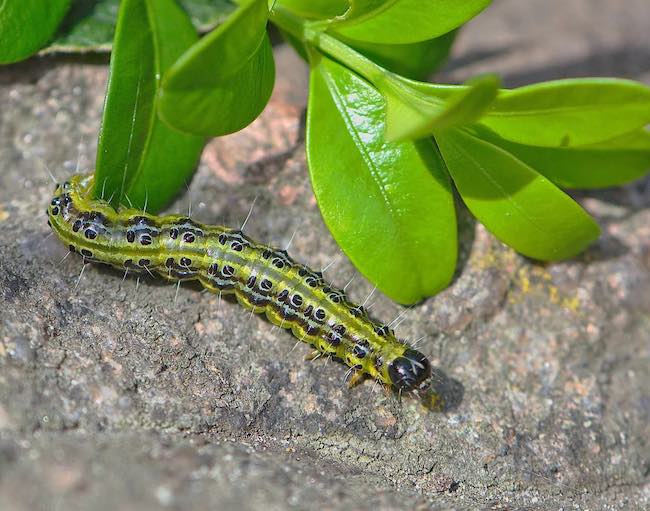How to control box caterpillar

The box caterpillar, also known as the box tree moth, is a pest that can cause significant damage to boxwood plants, which are popular in landscaping and gardening. Here are some effective methods to control box caterpillar infestations:
1. Physical Removal
One of the simplest and most effective ways to control box caterpillars is by physically removing them. Inspect the plants for caterpillars and their webs, and pick them off by hand. Be sure to dispose of them properly, either by burning or sealing them in a bag and discarding it in the trash.
2. Insecticides
Insecticides can be used to manage box caterpillars, but it is important to select a product specifically labeled for this pest. Follow the label instructions carefully, ensuring you spray the undersides of leaves where caterpillars often hide.
3. Biological Control
Natural predators, such as parasitic wasps and birds, can help reduce the box caterpillar population. Encouraging these predators or introducing them to your garden can be an effective form of biological control.
4. Cultural Control
Maintaining healthy boxwood plants is key to preventing infestations. Regular pruning and removing fallen leaves or other debris can reduce the chances of caterpillars finding a suitable habitat. Proper care and maintenance can make plants more resilient to pests.
5. Pheromone Traps
Pheromone traps can attract male box tree moths, reducing mating and thus the number of caterpillars. However, this method is most effective when used in combination with other control strategies.
Recovery After Serious Attack
In the case of a serious attack where caterpillars have stripped the leaves from the plant, the boxwood will often start to recover with new leaves growing. A good method to check if the plant is dead or still has life in the bare stems is to scratch the bare stems with your thumbnail. If it is still green underneath, then the plant is alive and should recover.
Prevention is Key
Preventing an infestation is always easier than dealing with one. Regularly monitor your boxwood plants for signs of caterpillars, and take early action if you spot any. Early intervention is crucial to keep box caterpillar populations under control.